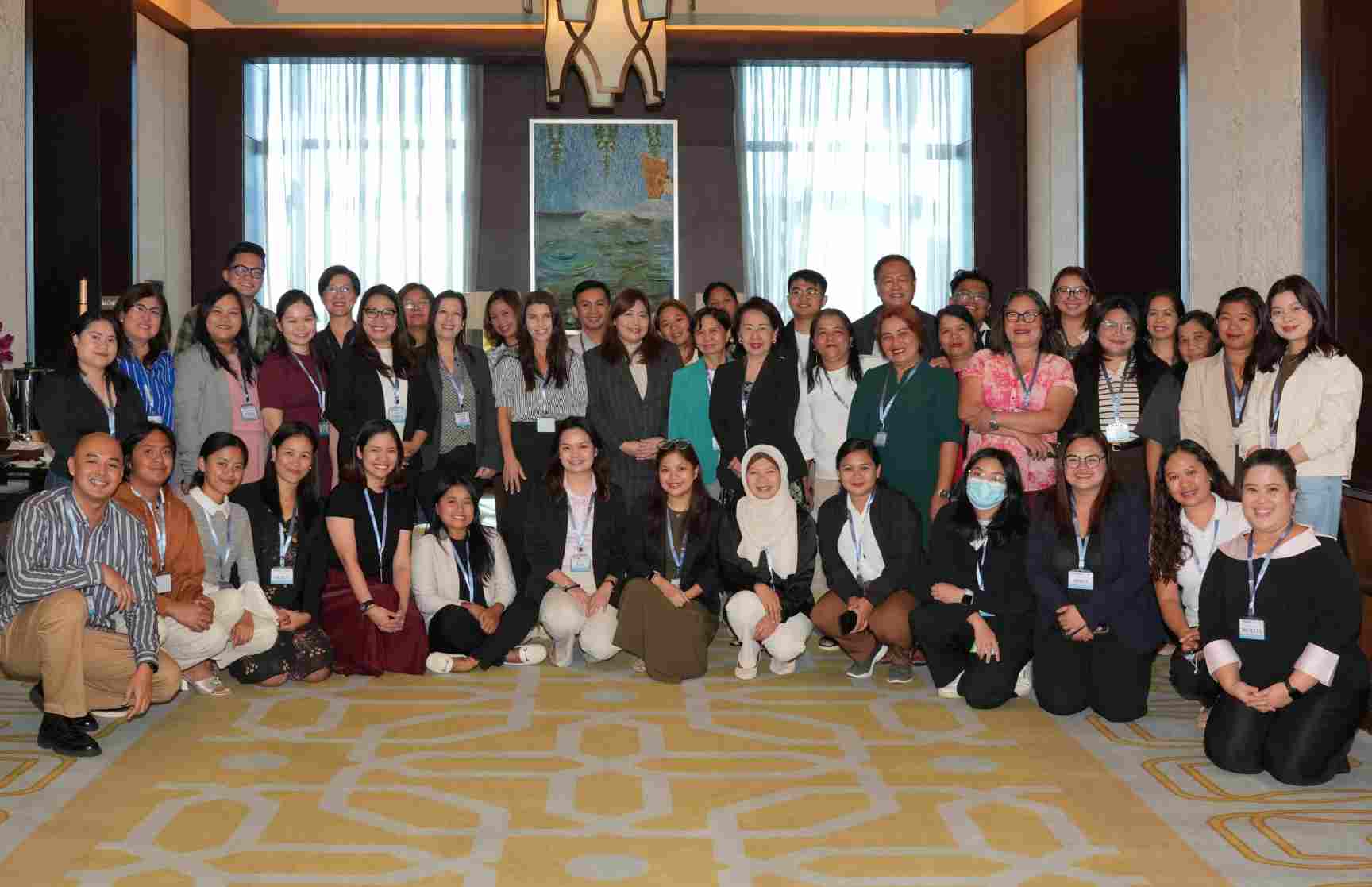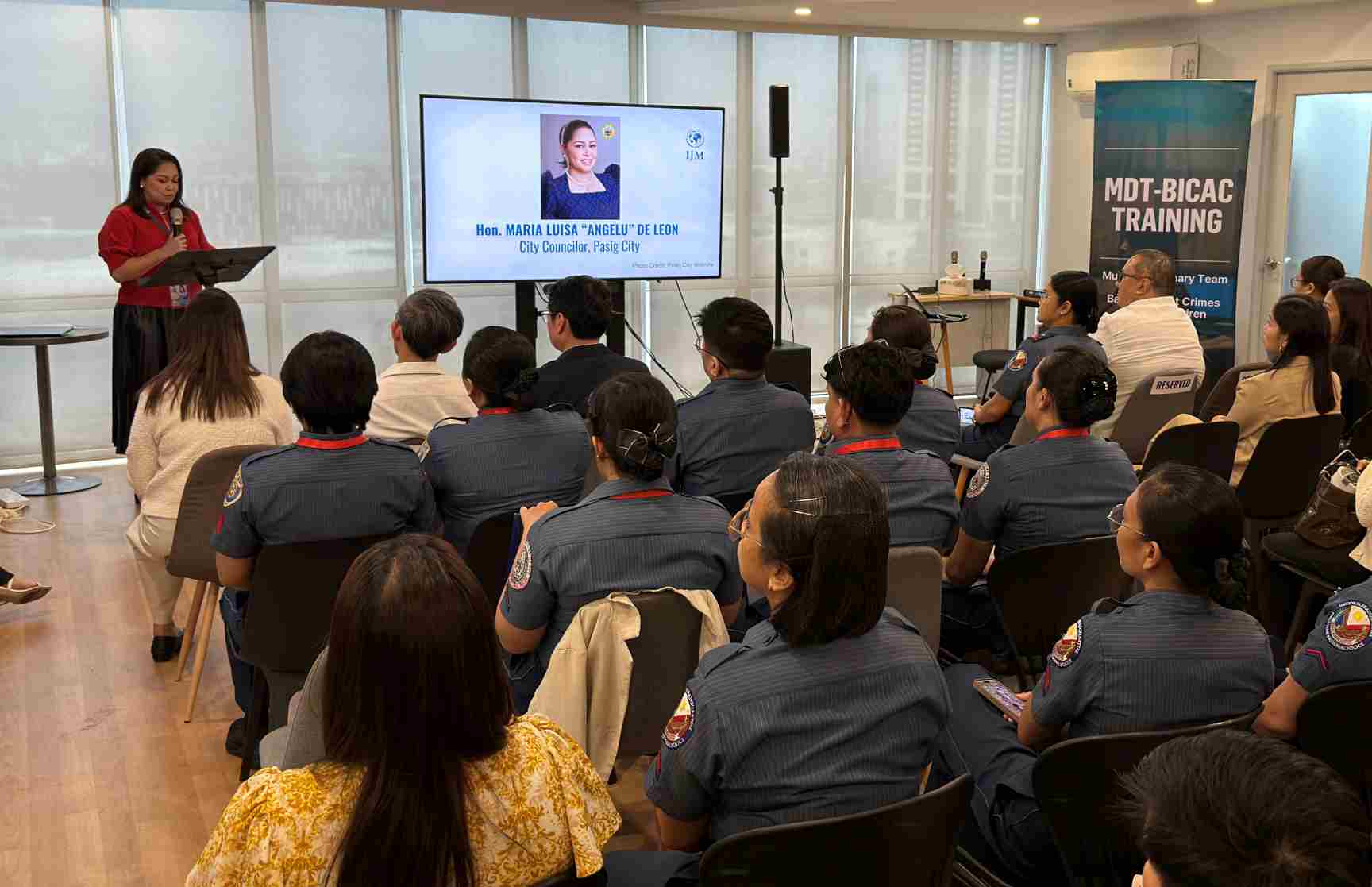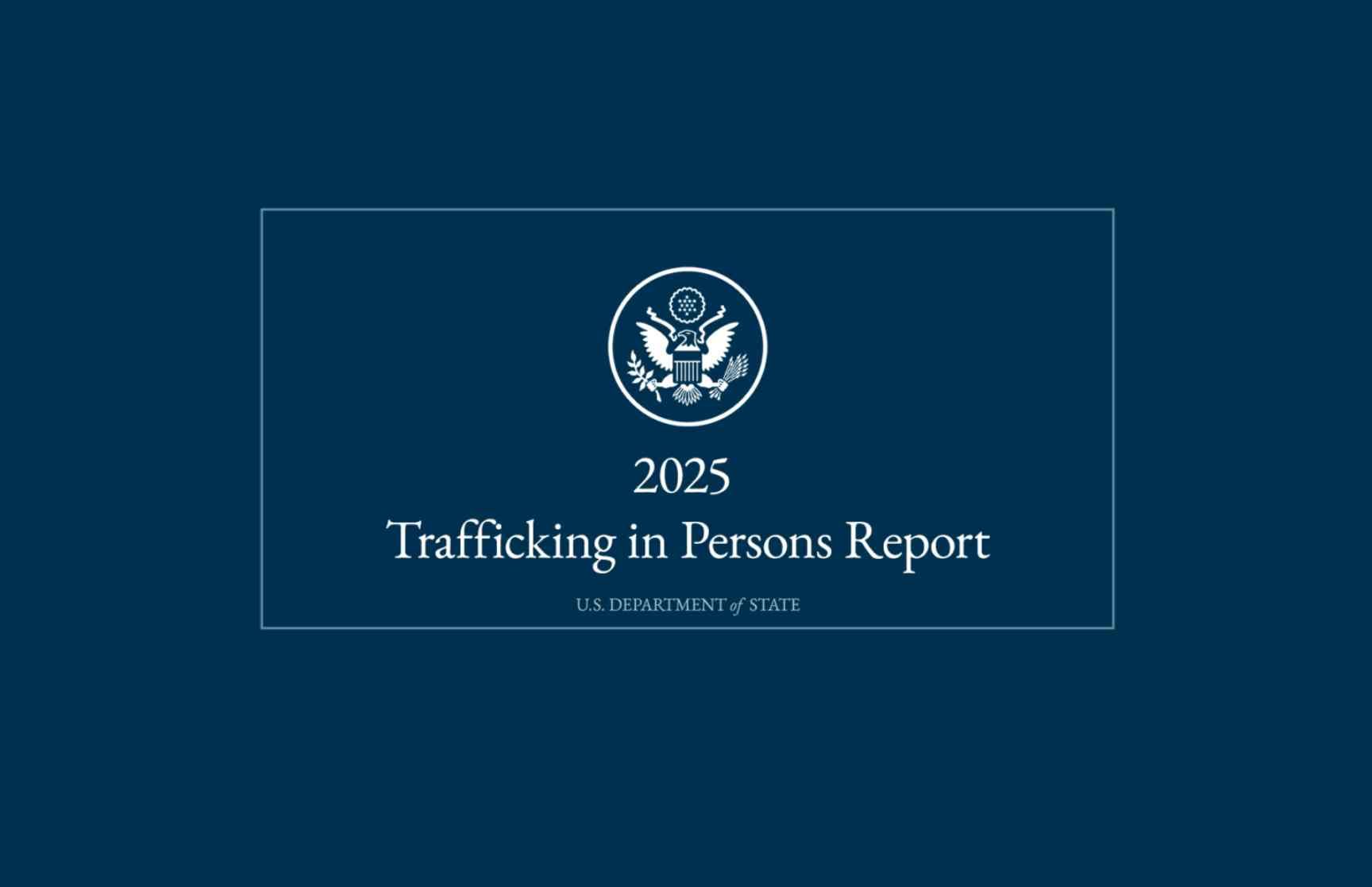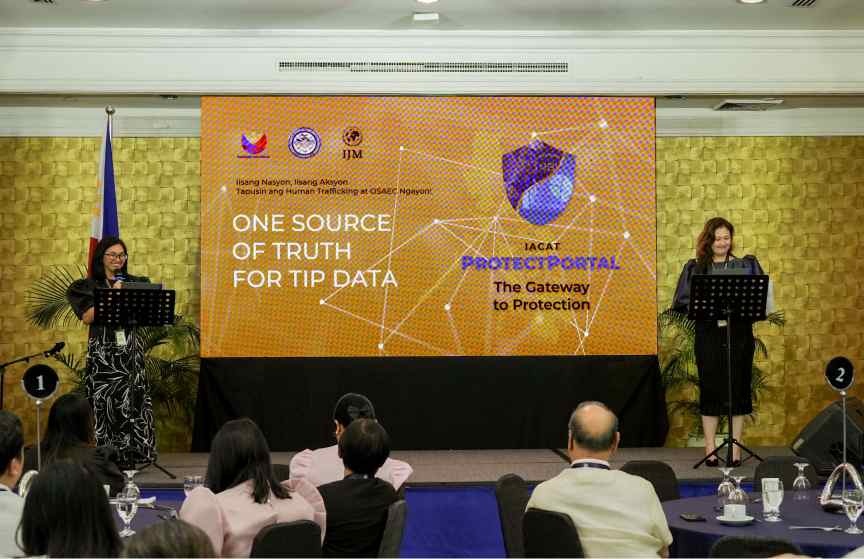
Last month, I had the opportunity to present to the Virtual Global Taskforce (VGT) about the intersection of the financial sector and livestreamed sexual abuse of children around the world.
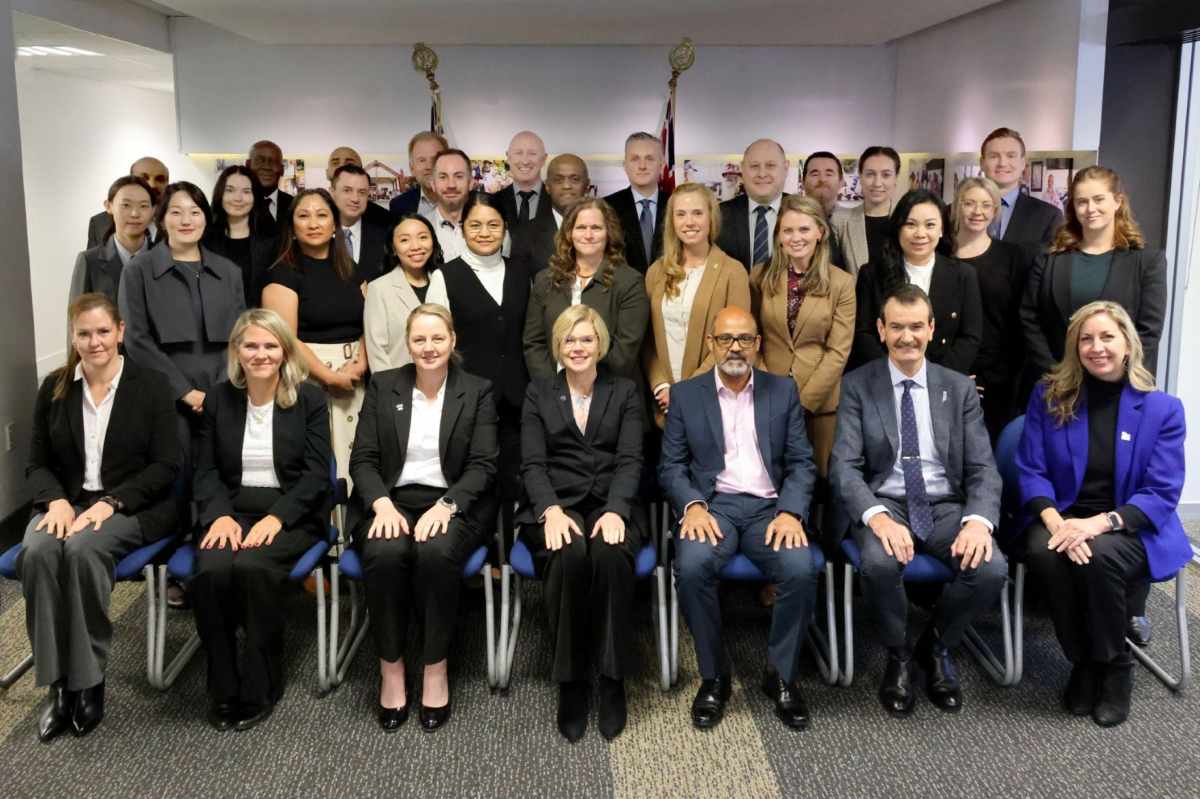 Photo from Helen Schneider
Photo from Helen Schneider
While a few isolated financial industry partners are addressing the problem, many are still unaware and failing to meaningfully address this crime facilitated by their services. Today, the means by which Anti-Money Laundering (AML) risk is calculated by the sector is not accurately accounting for the scale and severity of impact on children by sexual abuse and exploitation online.
Today, the means by which Anti-Money Laundering (AML) risk is calculated by the sector is not accurately accounting for the scale and severity of impact on children by sexual abuse and exploitation online.
From my firsthand experience within law enforcement and ongoing engagement with the sector, there appears to be a growing disconnect in the gap between the threat of livestreamed child sexual abuse and the likelihood of the financial sector to appropriately respond. In terms of the scale, in 2024, Europol identified live-distant child abuse as, “a persistent threat, where offenders watch child sexual abuse on demand with the support of one or more facilitators who perpetrate the abuse on the victim(s) in exchange for payment. It stands out as the main form of commercial sexual exploitation of children and as a major source of unknown CSAM [child sexual abuse materials].” Indeed, documented cases have been reported with children victimized in the United Kingdom, Brazil, Romania, Thailand, and elsewhere, including abuse of a 22-month-old in the U.S. and a 19-month-old in Colombia.
In 2023, IJM released “The Scale of Harm, Estimating the Prevalence of Trafficking to Produce Child Sexual Exploitation Material in the Philippines” study, in partnership with The University of Nottingham Rights Lab. The study found that in 2022 alone, nearly 500,000 children in the Philippines were trafficked to produce and sell new child sexual exploitation images, videos, and livestreamed abuse.
Also, in 2023, the Philippines Financial Intelligence Unit (FIU), Anti-Money Laundering Council (AMLC), conducted an evaluation of the scope of the problem of Online Sexual Abuse and Exploitation of Children (OSAEC) in the Philippines based on an evaluation of suspicious transaction report (STR) data. Evidencing likely only a slice of the scale of illicit payments, AMLC analyzed 182,729 OSAEC-related STR’s totaling over $27,000,000 USD. Foreign remittances for OSAEC were primarily sent from countries known for offenders paying for and consuming child sexual abuse online, primarily the United States, United Kingdom, Australia, Canada, as well as the European Union. AMLC concluded, “these numbers indicate that the safety and wellbeing of children are in grave peril.”
The Prevailing Financial Sector Approach is Falling Short
Despite the booming illicit industry of livestreamed child sexual abuse for payment and its clear reliance on the financial sector to thrive, the financial sector has not stepped up in a meaningful way to detect and prevent these payments. In fact, online sexual exploitation of children was not even cited as a top Anti-Financial Crime (AFC) Threat according to the Association of Certified Anti-Money Laundering Specialist’s Global Anti-Financial Crime Threats Report, 2025. Additionally, Canada’s Department of Finance released the “2025 Assessment of Money Laundering and Terrorist Financing Risks in Canada.” While OSEC was briefly referenced, it was listed as a “Medium Level” threat and was placed under the category of “ML Threat from Extortion and Ransomware” as a short sidenote to the problem of sextortion. This is not adequate treatment of such a heinous and widespread financial crime.
A Step in the Right Direction
In 2025, the Financial Action Task Force (FATF) released “Detecting, Disrupting, and Investigating Online Child Sexual Exploitation”. FATF provided meaningful guidance on how the financial sector can better utilize the data they possess to protect children from online sexual abuse and exploitation. Most significantly, FATF called on the financial sector to shift their method of risk assessment from monetary value to impact on children. FATF urged jurisdictions to “consider the level of human consequence and harm of these proceeds generating offences when considering [money laundering] ML risks.” FATF further stated, online sexual exploitation of children:
has devastating consequences on victims and their families. These consequences impact victims and their families throughout their lives, are often severe and long lasting, and in some cases have led children to take their own lives…
While I believe FATF’s guidance was a great step in the right direction, more is needed to properly evaluate and respond to the level of risk posed to children by online sexual exploitation.
Fundamentally, the prevailing AML model was never designed to prevent online child exploitation. It was designed to help the legitimate financial industry avoid being used to launder proceeds of illicit criminal activity. It was not designed to disrupt financial transactions that would initiate immediate harm to a child. These cases need more than documentation that is filed away in a Financial Intelligence Unit. Instead, these payments precede imminent harm to a child that requires a swift, meaningful intervention. Just as the financial industry had to adapt to emerging threats such as countering the financing of terrorism and proliferation of weapons of mass destruction, change is needed to address this persistent global threat to child safety.
Just as the financial industry had to adapt to emerging threats such as countering the financing of terrorism and proliferation of weapons of mass destruction, change is needed to address this persistent global threat to child safety.
Reimagined FATF Recommendations Could Curb Illicit Payments and Prevent Harm: The FATF 44
To establish a more effective and timely financial sector response, I propose that the FATF 40 Recommendations be significantly amended to account for this growing crime type. I propose that the new “FATF 44 Recommendations” include “Section H: Prioritize Child Safeguarding & Protection” that would include the following:
- Financial institutions shall assess risk of child exploitation within their products and services and create Child Safeguarding Policies to prevent the risk of harm to children.
- Financial institutions shall designate a Child Safeguarding Officer to implement and monitor the effectiveness of Child Safeguarding Policies.
- When instances of potential risk of child exploitation are detected, immediate further investigation should be conducted to ascertain if there is other evidence of increased risk and to evaluate the need to disrupt transactions.
- Child Safeguarding Policies shall contain clear guidance on how to respond to high confidence indicators of risk of child exploitation, calling for immediate notification of the proper law enforcement authority, in addition to submitting a SAR/STR to the relevant FIU.
While I recognize there is a cost associated to these measures for the financial sector, the cost to society and children of an inadequate response to online child sexual abuse and exploitation is much higher.
The global financial sector must adjust its international standards to mitigate the unacceptable level of risk of online sexual exploitation of children.
While I recognize there is a cost associated to these measures for the financial sector, the cost to society and children of an inadequate response to online child sexual abuse and exploitation is much higher. The global financial sector must adjust its international standards to mitigate the unacceptable level of risk of online sexual exploitation of children.
As FATF’s 2025 report highlighted, “One child facing such consequences of having their life dramatically altered is too many and all stakeholders must bring all available tools to bear to mitigate this risk to children.”
This piece also appears on LinkedIn.
David Ruggiero is the Director of Law Enforcement Capacity Building and Consulting at International Justice Mission’s Center to End Online Sexual Exploitation of Children (OSEC). David spent 20 years in U.S. law enforcement and has extensive experience in child exploitation and financial investigations. David also spent four years in Asia working in IJM’s child protection projects. He is a Certified Anti-Money Laundering Specialist (CAMS) and Certified Fraud Examiner (CFE).



